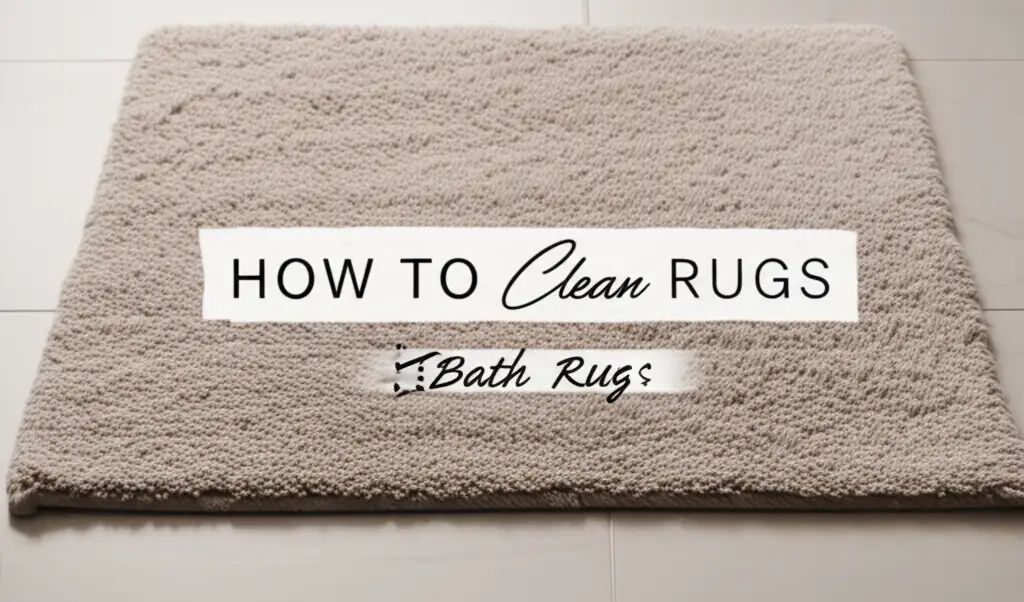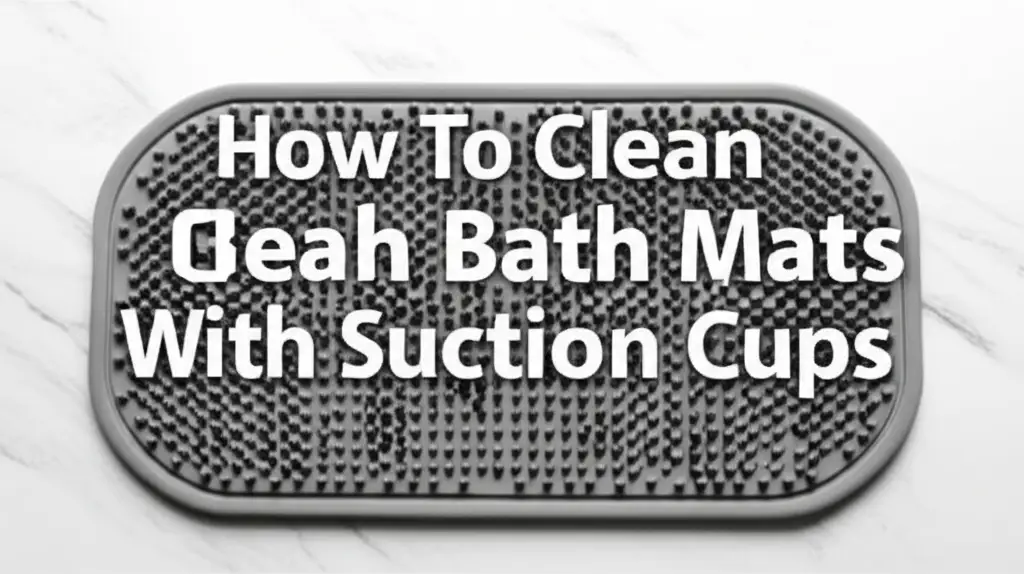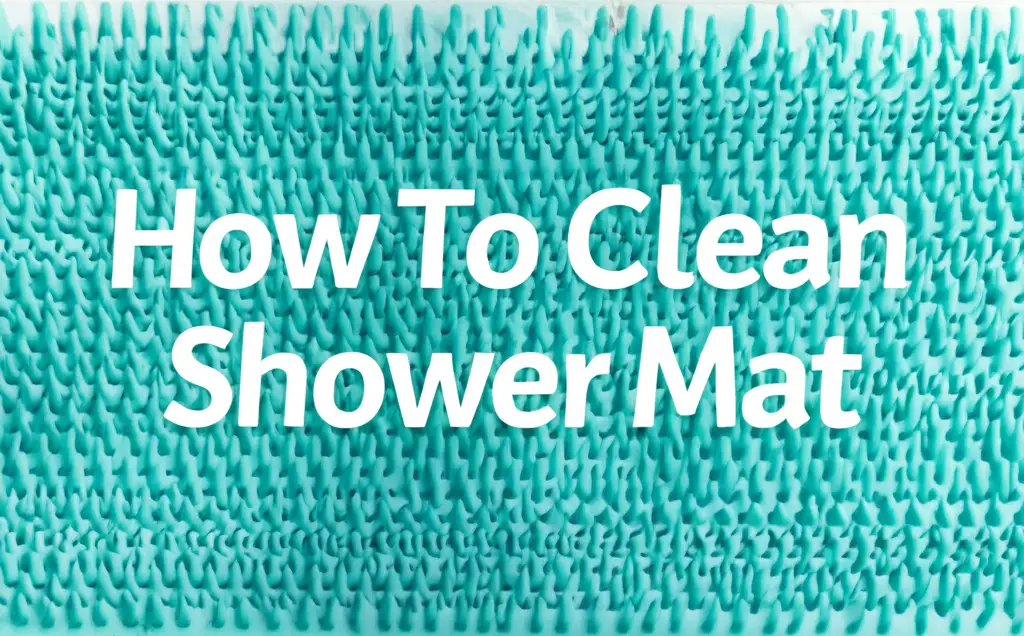· Home Cleaning · 12 min read
How To Clean Bath Rugs

Keep Your Bathroom Fresh: How To Clean Bath Rugs Effectively
Your bath rug works hard. It absorbs drips, catches dirt, and provides a soft landing spot after a shower. However, this important item also gathers moisture, dead skin cells, and germs. This makes cleaning your bath rugs a crucial step for a fresh and healthy bathroom environment. Regular cleaning helps them last longer and keeps your bathroom looking its best.
I know the thought of cleaning bath rugs might seem like a chore. You might wonder about the right way to wash different materials or how to remove stubborn odors. This article answers all those questions. We will explore the best methods for machine washing and hand washing. We will also share tips for drying, stain removal, and maintaining freshness. By the end, you will know exactly how to clean bath rugs with confidence.
Takeaway
Keeping your bath rugs clean makes your bathroom a healthier and more inviting space.
- Sort rugs by color and material before washing.
- Shake out loose dirt to prepare rugs for cleaning.
- Machine wash most bath rugs on a gentle cycle with cold water.
- Hand wash delicate or rubber-backed rugs.
- Dry rugs thoroughly to stop mold and mildew growth.
How to clean bath rugs: To clean bath rugs, first shake out loose debris. For machine-washable rugs, use a gentle cycle with cold water and mild detergent. Hand wash delicate or rubber-backed rugs. Always dry rugs completely to prevent mold and mildew, following care label instructions for best results.
Why Cleaning Your Bath Rug is Essential for Health and Home
Your bath rug lives in a damp environment. This makes it a perfect place for bacteria, mold, and mildew to grow. Every time someone steps on it after a shower, the rug absorbs water, skin cells, and microscopic dirt. This buildup is not only unhygienic but can also cause unpleasant odors. A dirty bath rug can spread germs throughout your bathroom.
Regular cleaning stops these harmful things from accumulating. It helps keep your family healthy by reducing germ exposure. A clean rug also makes your bathroom feel fresh and welcoming. It improves the air quality and stops damp smells. Furthermore, cleaning your bath rugs extends their lifespan. Dirt and moisture break down fibers over time. Proper care protects your investment and keeps your rugs looking new. I always feel better knowing my bathroom is truly clean, from the shower walls to the floor. Taking care of small items like bath rugs makes a big difference in overall home hygiene.
Understanding Different Bath Rug Materials and Care
Bath rugs come in many materials, and each one needs specific care. Knowing your rug’s material helps you clean it correctly without causing damage. Most bath rugs have a care tag. This tag gives specific washing instructions. Always check this tag before you clean your rug.
Common materials include cotton, microfiber, chenille, and memory foam. Cotton rugs are soft and absorb water well. They are usually machine washable. Microfiber rugs are very absorbent and quick-drying. They typically wash well in a machine. Chenille rugs are plush and comfortable. They often need gentle machine washing or hand washing to protect their soft texture. Memory foam bath mats are trickier. They contain a foam layer that can break down in a washing machine. You often need to hand wash these mats. Stone bath mats, a different kind of bath mat, also require special care, which you can learn about in our guide on how to clean stone bath mat. Some bath rugs have rubber or non-slip backings. These backings can degrade in hot water or high dryer heat. This causes the rubber to crack or melt. Always use cold water and air dry or use low heat for these rugs.
Pre-Cleaning Steps for Your Bath Rugs
Before you wash your bath rugs, proper preparation is important. These steps help ensure a deeper clean and protect your washing machine. Skipping these steps can leave your rugs dirty or even damage your machine. I always take a few minutes for this preparation.
First, take your bath rug outside. Shake it vigorously to remove loose dirt, hair, and debris. This stops these particles from clogging your washing machine or spreading in your wash water. You can also use a vacuum cleaner. Use a hose attachment to vacuum the rug thoroughly on both sides. Pay extra attention to the corners and edges where dirt collects. Next, check for any visible stains. Treat these stains before washing. Use a suitable stain remover for the specific type of stain. For example, a mixture of vinegar and water can help with mildew spots. You can learn more about how vinegar helps with mold by reading our guide on how to clean mold with vinegar. Apply the stain remover directly to the spot. Let it sit for a few minutes before washing. Finally, inspect the rug’s backing. If it has a rubber backing, ensure it is still intact. A damaged rubber backing might flake off in the wash. This can create a mess in your machine.
Machine Washing Your Bath Rugs: A Step-by-Step Guide
Most bath rugs are machine washable, making cleaning them simple. Follow these steps for a thorough and safe wash. Always refer to your rug’s care tag first. The tag provides the best guidance for your specific rug.
- Load the Washer Correctly: Do not overload your washing machine. Wash bath rugs separately or with similar bathroom items like towels. Overloading prevents proper rinsing. I usually wash two bath rugs at a time.
- Use Cold Water and Gentle Cycle: Cold water protects the rug fibers and prevents rubber backings from degrading. Hot water can shrink rugs or damage non-slip backings. Choose the gentle or delicate cycle setting. This setting reduces agitation. Less agitation is kinder to the rug’s material and backing.
- Add Mild Detergent: Use a mild liquid detergent. Avoid harsh chemicals or bleach unless the care tag specifically allows it. Bleach can weaken fibers and fade colors. Bleach can also damage rubber backings. For a natural boost, you can add half a cup of white vinegar to the wash cycle. Vinegar helps kill bacteria and removes odors. It also softens the fabric without harsh chemicals. For more cleaning tips using vinegar, you can check out our article on how to clean shower with vinegar.
- Consider an Extra Rinse Cycle: An extra rinse cycle ensures all detergent is washed out. Detergent residue can make rugs stiff. It can also attract dirt faster. This step is especially helpful for thick, absorbent rugs.
Hand Washing Delicate Bath Rugs
Some bath rugs, especially those with delicate fibers, intricate designs, or specific rubber backings, are better suited for hand washing. This method offers a gentle clean and helps preserve the rug’s quality and shape. Hand washing extends the life of rugs that machine washing might damage.
To hand wash your bath rug, start by shaking out any loose dirt as described in the pre-cleaning section. Fill a large basin, utility sink, or bathtub with cool water. Add a small amount of mild liquid detergent to the water. Swish it around to create some suds. Submerge the bath rug completely in the soapy water. Gently agitate the rug with your hands. Focus on areas that seem dirtier or have visible spots. Avoid harsh scrubbing or twisting, as this can damage the fibers or backing. Let the rug soak for 15-30 minutes, depending on how dirty it is. After soaking, drain the soapy water. Rinse the rug thoroughly under cool, running water. Keep rinsing until no more soap suds appear. Press out excess water gently. Do not wring or twist the rug, as this can stretch or damage the material. For bath mats with suction cups, similar gentle cleaning is needed; read about how to clean bath mats with suction cups. This careful approach ensures your delicate bath rugs stay beautiful and functional for longer.
Drying Your Bath Rugs Properly
Drying your bath rugs correctly is as important as washing them. Improper drying can lead to mildew growth, unpleasant odors, and damage to the rug’s backing. Always aim for a thorough and gentle drying process. This step prevents moisture issues.
First, check the care label for drying instructions. Many bath rugs, especially those with rubber backings, should not go in a hot dryer. High heat can cause rubber to crack, melt, or become sticky. This ruins the rug’s non-slip function. For most bath rugs, air drying is the best option. Hang your rug over a clothesline, a shower rod, or a drying rack. Make sure air circulates around both sides of the rug. This speeds up drying and prevents damp spots. If you use an indoor drying rack, place it in a well-ventilated area. A sunny spot near a window is ideal.
If you must use a dryer, select the lowest heat setting or an air-fluff (no heat) setting. Add a few dryer balls to help fluff the rug and speed up drying. Remove the rug while it is still slightly damp. Then, air dry it completely. This minimizes heat exposure. Always ensure the rug is completely dry before placing it back in the bathroom or storing it. Even slightly damp rugs can develop mildew, especially in humid bathroom environments. Mold in showers is a common problem, and similarly, damp rugs contribute to such issues. For insights on managing such problems, consider our guide on how to clean mold in shower.
Tackling Common Bath Rug Stains and Odors
Bath rugs face daily challenges that can lead to stains and persistent odors. Addressing these issues effectively keeps your rugs looking and smelling fresh. Ignoring them can lead to stubborn problems that are harder to fix. I have dealt with many stains myself.
For stains, act quickly. The sooner you treat a stain, the more likely you are to remove it completely.
- Mildew Stains: Mildew often appears as black or pink spots. Create a paste with baking soda and water. Apply it to the mildew. Let it sit for 30 minutes, then scrub gently with a brush. Wash the rug as usual. Vinegar also works well for mildew.
- Makeup or Grease Stains: Sprinkle cornstarch or baking soda on the stain to absorb the grease. Let it sit for 15-20 minutes, then brush off. Apply a small amount of dish soap to the stain. Work it in gently. Rinse and then wash the rug.
- General Dirt/Grime: For common dirt, pretreat with a laundry stain remover or a mix of mild detergent and water. Scrub lightly with a soft brush.
For odors, especially damp or musty smells:
- Vinegar Soak: Fill a tub with cool water. Add one cup of white vinegar. Submerge the rug and let it soak for an hour. The vinegar neutralizes odors. Then wash the rug as usual.
- Baking Soda Sprinkle: After washing and drying, sprinkle baking soda generously over the rug. Let it sit for a few hours or overnight. Vacuum up the baking soda. It absorbs lingering odors.
Regular cleaning prevents most serious stain and odor issues. But when they do happen, these methods can restore your rug’s freshness.
Maintaining Bath Rug Freshness Between Washes
Cleaning your bath rugs regularly is important. However, there are also simple steps you can take to keep them fresh between washes. These habits prevent dirt and moisture buildup. They help your rugs stay cleaner for longer. I find these small actions make a big difference.
First, hang your bath rug to dry after every use. Do not leave it crumpled on the floor. Hanging it allows air to circulate. This helps the rug dry completely. It stops moisture from getting trapped. This trapped moisture often causes mildew and odors. You can drape it over the side of the tub or a towel rack. Second, consider having two bath rugs. You can rotate them regularly. While one is in use, the other can air out or simply rest. This rotation gives each rug more time to dry fully. It also reduces wear and tear on a single rug.
Third, shake your bath rug outside once a week. This removes loose dirt, hair, and dust. It stops these particles from settling deep into the fibers. A quick shake takes only a few seconds. It keeps the rug much cleaner between washes. Finally, ensure your bathroom is well-ventilated. Use an exhaust fan during and after showers. Open a window if possible. Good airflow reduces overall humidity in the bathroom. Less humidity means less moisture for mold and mildew to grow on your rug and other surfaces. This also contributes to keeping the bottom of your shower clean, as a dry environment helps prevent grime buildup. You can find more tips on how to keep the bottom of your shower clean in our related article.
Conclusion
Cleaning your bath rugs is a simple yet vital task for a healthy and inviting home. We covered how to clean bath rugs effectively, from understanding different materials to tackling stubborn stains and odors. Remember, regular care not only keeps your rugs fresh but also extends their life. Proper washing and drying methods prevent mold and mildew, ensuring your bathroom always feels clean and smells pleasant.
By following these practical tips, you can maintain a high level of hygiene in your bathroom with minimal effort. Make cleaning your bath rugs a consistent part of your cleaning routine. You will notice a big difference in the freshness and comfort of your space. Do not let a dirty rug diminish your bathroom’s appeal. Take action today and give your bath rugs the care they deserve. Your clean and happy bathroom awaits!
- bath rug cleaning
- bathroom hygiene
- rug care
- washable rugs




